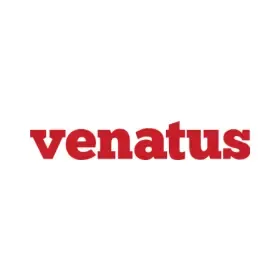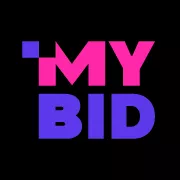7 Best Newsletter Monetization Platforms for Creators
-
 By Editorial Staff
By Editorial Staff
-
13 September 25
Welcome to 2025 where newsletters aren’t just something you send to your email list– they’re entire businesses. Forget the outdated image of bloggers begging for clicks with banner ads. Today, newsletters are profit engines -- fueling careers, creating brands, giving creators the one thing social media will never guarantee: ownership of your audience. Newsletters are the only funnel that is not dependent on the abrupt whims and algorithm kinks of social media, which, let’s face it, makes creator discoverability, visibility and follower lists always hanging on a thread. Platforms like Substack, Beehiiv, Ghost, and Kit (formerly ConvertKit) aren’t just email tools. They’re mini-economies where you can sell subscriptions, land sponsorships, run ads, or even launch your own digital products. And the numbers speak for themselves: Substack alone boasts over 5 million paid subscriptions globally (The Hollywood Reporter, 2025). That’s not a fad, that’s a movement.
But here’s the catch: choosing the wrong platform can feel like handing your paycheck to a landlord who never fixes the plumbing. So, how do you pick the “right” one, scale it, and actually make money without burning out your list? Let’s break it down.
Summary
-
7 Best Newsletter Monetization Platforms for Creators
- Why Monetizing via Newsletter is Powerful
- Key Criteria to Evaluate Monetization-Friendly Newsletter Platforms
- 1. Substack
- 2. Beehiiv
- 3. Kit
- 4. Ghost
- 5. MailerLite
- 6. Letterdrop
- 7. Mailmodo
- Additional Ways to Monetize Newsletters (Beyond Subscriptions)
- How to Choose the Best for Your Situation
- Pros & Trade-offs: What to Be Cautious Of
 Welcome to 2025 where newsletters aren’t just something you send to your email list– they’re entire businesses. Forget the outdated image of bloggers begging for clicks with banner ads. Today, newsletters are profit engines -- fueling careers, creating brands, giving creators the one thing social media will never guarantee: ownership of your audience. Newsletters are the only funnel that is not dependent on the abrupt whims and algorithm kinks of social media, which, let’s face it, makes creator discoverability, visibility and follower lists always hanging on a thread. Platforms like Substack, Beehiiv, Ghost, and Kit (formerly ConvertKit) aren’t just email tools. They’re mini-economies where you can sell subscriptions, land sponsorships, run ads, or even launch your own digital products. And the numbers speak for themselves: Substack alone boasts over 5 million paid subscriptions globally (The Hollywood Reporter, 2025). That’s not a fad, that’s a movement.
Welcome to 2025 where newsletters aren’t just something you send to your email list– they’re entire businesses. Forget the outdated image of bloggers begging for clicks with banner ads. Today, newsletters are profit engines -- fueling careers, creating brands, giving creators the one thing social media will never guarantee: ownership of your audience. Newsletters are the only funnel that is not dependent on the abrupt whims and algorithm kinks of social media, which, let’s face it, makes creator discoverability, visibility and follower lists always hanging on a thread. Platforms like Substack, Beehiiv, Ghost, and Kit (formerly ConvertKit) aren’t just email tools. They’re mini-economies where you can sell subscriptions, land sponsorships, run ads, or even launch your own digital products. And the numbers speak for themselves: Substack alone boasts over 5 million paid subscriptions globally (The Hollywood Reporter, 2025). That’s not a fad, that’s a movement.
But here’s the catch: choosing the wrong platform can feel like handing your paycheck to a landlord who never fixes the plumbing. So, how do you pick the “right” one, scale it, and actually make money without burning out your list? Let’s break it down.
Why Monetizing via Newsletter is Powerful
- You own the pipeline: Social media platforms throttle reach, but an email inbox is private territory, you’re not at the mercy of algorithms.
- Loyalty Pays: Average free-to-paid conversion rates hover around 5% (Databox Survey)
- Multiple Cash Flows: Subscriptions, sponsorships, courses, affiliate links—the newsletter is no longer one-dimensional.
- Low overhead, high ROI. With the right platform, your biggest investments are creativity and consistency, not infrastructure.
Key Criteria to Evaluate Monetization-Friendly Newsletter Platforms
Before we name-drop platforms, here are the must haves you can’t compromise on:
- Subscriptions & Memberships: Easy setup for paid tiers, bonus content, or community perks.
- Fees & Revenue Share: Do you want to give Substack 10% of your revenue, or would you rather keep it flat with Ghost or Beehiiv?
- Discoverability: Some platforms (like Substack) act like social networks, helping new readers find you. Others leave growth entirely up to you.
- Analytics & Growth Tools: Churn, referrals, A/B testing, subscriber segmentation—it’s not “sexy,” but it’s how you stay profitable.
- Deliverability: Your genius doesn’t matter if Gmail throws it into the Promotions tab.
- Integrations & Portability: Can you plug in payment processors, course platforms, and export your list if you ever decide to switch?
7 Best Newsletter Monetization Platforms in 2025
Here are seven platforms creators are using successfully today:
1. Substack

Substack is still the heavyweight in the paid newsletter space, and for good reason. It makes it dead simple to run both free and paid tiers, while taking care of the boring stuff like payments, hosting, and subscriber management. Thanks to the Substack Reader and its built-in recommendation engine, you also get visibility beyond your own list. As of 2025, the platform has crossed 5 million paid subscriptions worldwide.
- Best for: Perfect for writers, thought-leaders, and creators who value simplicity and want to tap into Substack’s discovery ecosystem.
- Watch out for:: Substack takes a 10% cut of your revenue, offers limited design customization, and growing a paid base in niche markets can take time and hustle.
2. Beehiiv

If you’re a publisher looking to launch, scale, and monetize a newsletter without the headache of stitching together a dozen tools, Beehiiv offers you a centralized hub to do just that. The platform is more than just another newsletter tool, it’s an all-in-one growth engine for writers, creators, and brands who want to build loyal audiences and monetize their content. Beehiiv includes a native ad marketplace, referral programs, and paid tiers built right in.
- Best for: Growth-focused creators who want ads + subscriptions under one roof.
- Watch out for: Costs rise quickly as you scale. Premium features are often locked in higher tiers.
3. Kit

Kit (formerly ConvertKit) is a hybrid platform mixing subscriptions with a creator commerce hub. Alongside subscriptions, you can bundle in courses, workshops, coaching packages, or digital downloads, all managed under one roof. It’s built with creators in mind, offering simple sales funnels, customizable landing pages, and decent analytics.
- Best for: Creators selling more than words - think educators, coaches, or creators running hybrid content + product businesses.
- Watch out for: The ecosystem is smaller, discoverability is limited, and advanced automations are still catching up compared to bigger players.
4. Ghost

Ghost is the self-hosted, independent alternative for creators who hate being boxed in. It’s open-source, giving you total control over your tech stack and branding—newsletter, blog, memberships, and paywalls included. Ghost has grown popular among creators who prioritize design freedom, speed, and data ownership. It comes with built-in SEO tools, integrations, and customizable themes.
- Best for: Creators who want complete independence, maximum design flexibility, and a brand-first publishing model.
- Watch out for: Costs rise with scale, and setup/maintenance can be a headache for non-technical users.
5. MailerLite

MailerLite is often the starting point for creators dipping their toes into monetization. Affordable and intuitive, it offers the essentials - automation, forms, pop-ups, and landing pages without overwhelming beginners. It has strong deliverability and is lighter on the wallet than many competitors, making it a solid entry-level option.
- Best for: Beginners and small creators testing monetization waters with minimal risk.
- Watch out for: Design flexibility and premium automation are gated in higher tiers, and the UI feels less polished compared to design-first platforms.
6. Letterdrop

Letterdrop is designed for B2B creators, SaaS companies, and agencies that want more than just a simple newsletter tool. It combines content distribution, SEO optimization, and monetization workflows into a single platform. With features like AI-assisted writing, automated LinkedIn post generation, and integrations with CRMs, Letterdrop is especially popular with startups and growth-focused businesses that see newsletters as part of a broader content strategy.
- Best for: Advanced automation, seamless SEO optimization, and CRM integrations for sales/marketing teams. Great for creators who want to turn newsletters into a lead-generation + monetization engine.
- Watch out for: More business-oriented than creator-oriented. Pricing is higher compared to platforms like MailerLite or Beehiiv, which may deter indie writers.
7. Mailmodo

Mailmodo is the wild card in the newsletter game. It specializes in AMP-powered interactive emails— think forms, polls, product carts, and surveys embedded directly into emails, boosting engagement without redirecting readers to another site. This interactivity can dramatically improve conversion rates for publishers who rely on ads, ecommerce, or subscriber surveys.
- Best for: Advanced publishers who want to wow readers and push interactivity beyond static newsletters.
- Watch out for: Steeper learning curve, inbox compatibility issues, and rising costs as you scale complexity.
Additional Ways to Monetize Newsletters (Beyond Subscriptions)
- Sponsorships: Brands will happily pay to get in front of your audience.
- Affiliate Marketing: Recommending tools or products = passive income.
- Courses, Guides, Merch: Your newsletter becomes a launchpad.
- Donations/Tips: Easy add-on for loyal superfans.
- Bundling & Communities: Pair your newsletter with Slack/Discord/Patreon-style perks.
How to Choose the Best for Your Situation
Not all newsletter platforms are created equal. The best choice depends less on what’s “popular” and more on where you are in your journey and what you’re trying to achieve. Ask yourself these key questions before committing:
What’s your audience size and growth trajectory?
If you’re just starting out, prioritize low-cost or free plans with minimal friction so you can focus on building momentum. As your list grows and paid conversions kick in, it may make sense to upgrade to a platform with more robust monetization and automation features.
Do you want simplicity or maximum control?
Platforms like Substack and Beehiiv shine if you want speed and simplicity—just start writing and publishing. But if branding, custom design, and interactive features are non-negotiable, consider platforms like Ghost or Mailmodo.
How technical are you willing (or able) to get?
If you’re comfortable tinkering with hosting and integrations, self-hosting with Ghost gives you ultimate control and ownership. If you’d rather avoid the tech stack, go with a managed, plug-and-play platform like Beehiiv.
What’s the real cost of monetization?
Look beyond the headline price. Factor in platform fees, payment processor cuts, and revenue shares. Substack, for example, takes 10% off the top, while Beehiiv or Ghost may leave you with more in your pocket depending on your setup.
How strong are the analytics and growth tools?
Good platforms should help you do more than send emails. Look for insights into open and click-through rates, referral programs, churn tracking, segmentation, and A/B testing. These metrics are the levers that help you grow and retain paid subscribers.
Who owns your list?
This one’s critical. Your subscriber list is your business. Make sure the platform allows easy exporting and migration if you ever decide to move. True independence comes from controlling your data and your relationship with your audience.
Pros & Trade-offs: What to Be Cautious Of
- Platform + payment fees can eat more than you expect.
- Discoverability is great, but don’t build your house on rented land—own your list.
- Email fatigue is real. Over-send, under-deliver, and watch churn spike (~4% monthly is average).
- Pretty doesn’t always win. Heavy design can wreck deliverability.
- Compliance (GDPR, CAN-SPAM) isn’t optional—ignore it at your peril.
Conclusion & Recommendations
If you’re starting a newsletter in 2025 and wanted to monetize:
- Begin with something with low friction and built-in paid tier support, like Substack or Beehiiv. Early focus should be free content + growing engaged subscribers + converting to paid (maybe a small paid tier).
- As you scale, consider migrating to or adding a platform like Ghost if you want to tinker with hosting and integrations, or Mailmodo if you want interactivity.
- Mix in sponsorships, affiliates, and products alongside paid subs.
Final Thoughts
The newsletter game in 2025 isn’t about spamming inboxes, it’s about building a business on your own terms. Platforms like Substack, Beehiiv, Ghost, and Kit give creators the tools to turn subscribers into revenue streams, but the platform is just the vehicle. The real power lies in how you use it: nurturing an engaged audience, diversifying your monetization, and owning your subscriber list like it’s digital gold.
At the end of the day, the creators who win aren’t the ones chasing algorithms or obsessing over open rates, they’re the ones who treat their newsletters as ecosystems. Whether you’re writing for 500 people or 50,000, the opportunity is the same: control, independence, and scalable income.
| Recommended Software | Category | Why Choose? | Signup URL |
|---|---|---|---|
| Setupad | Website Monetization | High CPMs, On time payments | Signup here |
| Adsterra | Website Monetization | AdSense alternative, niche CPMs | Signup here |
| Beehiiv | Email Monetization | Additional revenue, High CPMs | Signup here |
| Semrush | SEO | High impact on SEO and traffic | Signup here |
| Frase.io | AI SEO | Affordable, Boosts SEO traffic | Signup here |
| WP Rocket | Speed Optimization | Affordable, Boosts Pagespeed | Signup here |

Editorial Staff at Publisher Growth is a team of blogging and AdTech experts adept at creating how-to, tutorials, listings, and reviews that can publishers run their online businesses in a better way.
View All PostsOur Editors’ Pick:
Browse these amazing publisher monetization tools handpicked by our team of editors













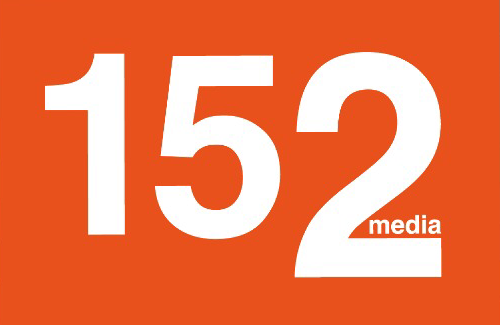




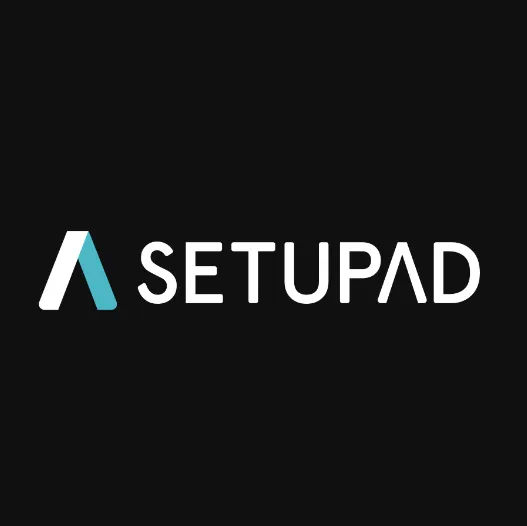

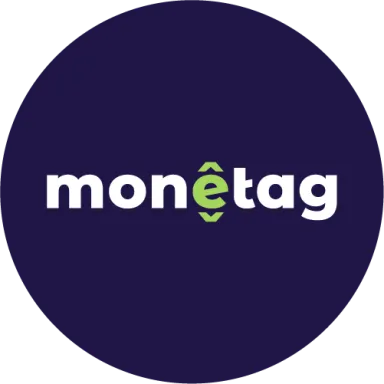


 (1).webp)
